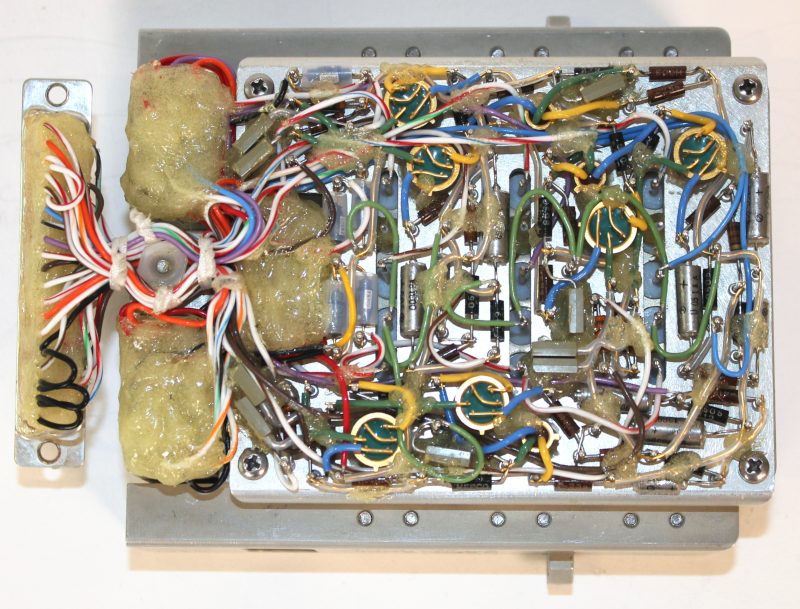Can You Hear Me Now? Lunar Edition

Despite what it looks like in the movies, it is hard to communicate with astronauts from Earth. There are delays, and space vehicles don’t usually have a lot of excess power. Plus everything is moving and Doppler shifting and Faraday rotating. Even today, it is tricky. But how did Apollo manage to send back TV, telemetry, and voice back in 1969? [Ken Shirriff] and friends tell us part of the story in a recent post where he looks at the Apollo premodulation processor.
Things like weight and volume are always at a premium in a spacecraft, as is power. When you look at pictures of this solid box that weighs over 14 pounds, you’ll be amazed at how much is crammed into a relatively tiny spot. Remember, if this box was flying in 1969 it had to be built much earlier so there’s no way to expect dense ICs and modern packaging. There’s not even a printed circuit board. The components are attached to metal pegs in a point-to-point fashion. The whole thing lived near the bottom of the Command Module’s lower equipment bay.
The processor, or PMP, played a key role in multiplexing different streams in different configurations and passing them to (and from) the onboard S-band transmitter. Inside the box, [Ken] found four subassemblies nicely labeled and connected to a thin backplane. Along with discrete components, the modules also employed off-the-shelf assemblies that predated ICs and offered functions like filters or oscillators in one convenient package.
One thing that further complicated the design was the need for redundancy. For example, there are two switching regulators inside — yep, a switching regulator in a piece of gear from the 60’s — and the crew could select between the two power supplies.
[Ken] takes us through each module. The voice and data detector module extracted voice on a 30 kHz FM subcarrier. There’s also a bi-phase modulator, voice clipping, and a relay module to pass signals from the lunar module back to Earth.
If you want a closer look at the Apollo comm system, [CuriousMarc] has a series about it and was part of the group and stripped down this PMP. Radio signals are fun, of course, but the best footage came back as film. However, modern technology has sharpened up some of that old footage.
Post a Comment